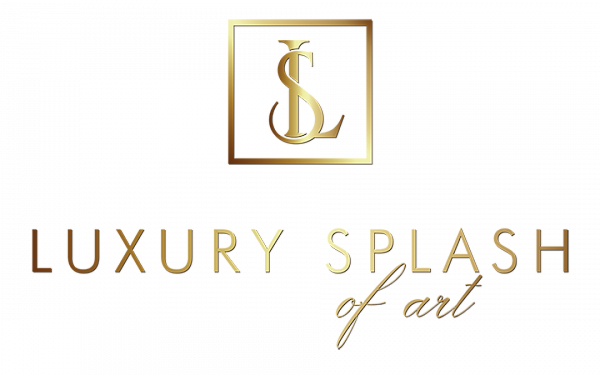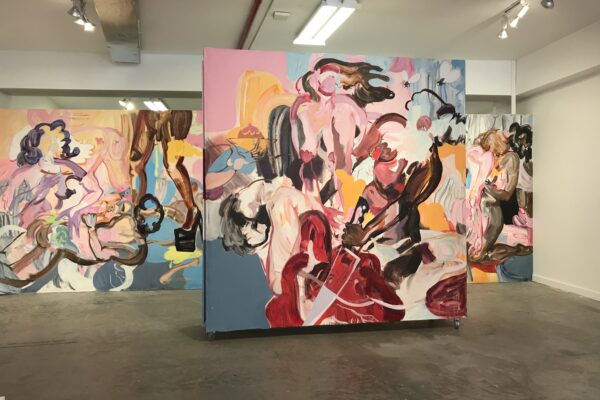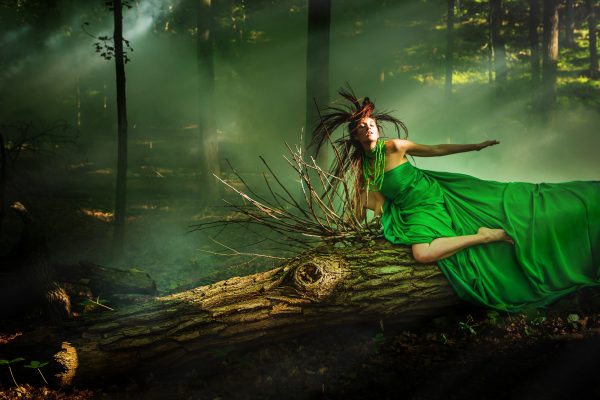In 1849, the popular illustrated magazine Le Magasin Pittoresque published an etching by Henri Valentin entitled Intérieur de l’atelier d’un artiste au dix-neuvième siècle (“Interior of the studio of an artist in the nineteenth century”), without further details. In his explanatory text, a journalist denounced the habit taken by artists who open their studio to a crowd of friends and visitors. He regretted seeing them so, created in the midst of a permanent cacophony while the artists of the sixteenth century painted and sculpted in a solitude conducive to inspiration. No doubt he forgot the later trained students and, sometimes, employed staff but it is true that their process of creation involved a certain peace of mind. Parallel to this etching, a watercolor (private collection) was made under the title L’Atelier de Clésinger (“Clésinger’s Studio”), as well as an oil on canvas (private collection) which was quite recently discovered. These three versions, which can be attributed to Henri Valentin, have some minor variants, the canvas offering the widest framing. These works, strictly contemporary and quite identical, made it possible to identify almost all the persons present in the studio. All belonged to the artistic elite of the time.
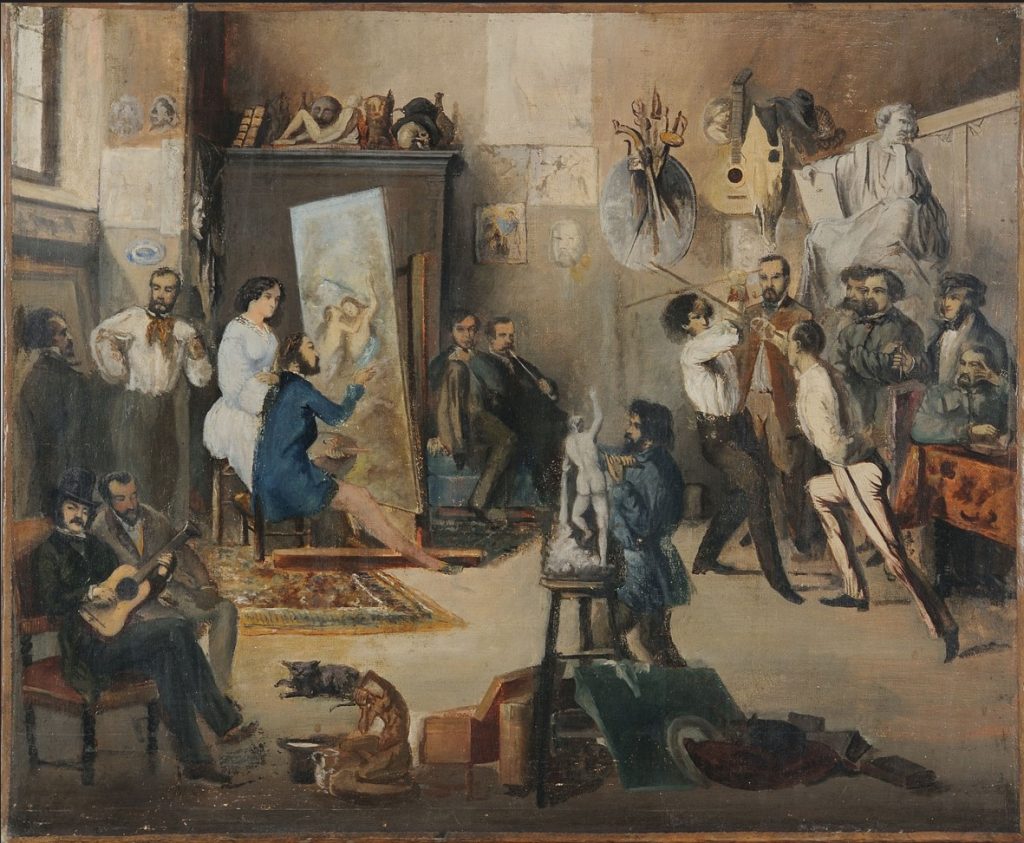
Thus, in the foreground, the novelist Alexandre Dumas playing the guitar, sitting near the poet Pierre Dupont – whom Baudelaire admired. The sculptor at work is Jean-Baptiste Auguste Clésinger who had known an international celebrity two years earlier by exhibiting in Paris a full-scale erotic marble La Femme piquée par un serpent (“The Woman bitten by a snake”). In the background, we recognize, from left to right, the writer and art critic Maxime Du Camp, the painter Fernand Boissard de Boisdenier, Apollonie Sabatier (also known as “La Présidente” who received every Sunday evening in her living-room Théophile Gautier, Gérard de Nerval, Gustave Flaubert… and with whom Baudelaire was so in love). La Présidente was one of the very few women that artists invited in their studios apart from models. The painter has not been clearly identified so far: it could be Nestor Roqueplan, but also Charles Jalabert whose studio, at the time, was close to that of Clésinger in the same street. On a sofa, in the background, sit the writer Alphonse Karr and the poet Gérard de Nerval who smokes a long pipe. Among the two men playing stick, one could be the officer and writer Stanislas d’Arpentigny. As for the group to the right of the image, it consists of Champfleury (writer, theorist of Realism), the violinist Alfred Promayet, the poet Max Buchon and, seated at a table, the painter Paul Chenavard. Above it, the man wearing a cap could be the painter Camille Corot, without certainty however.
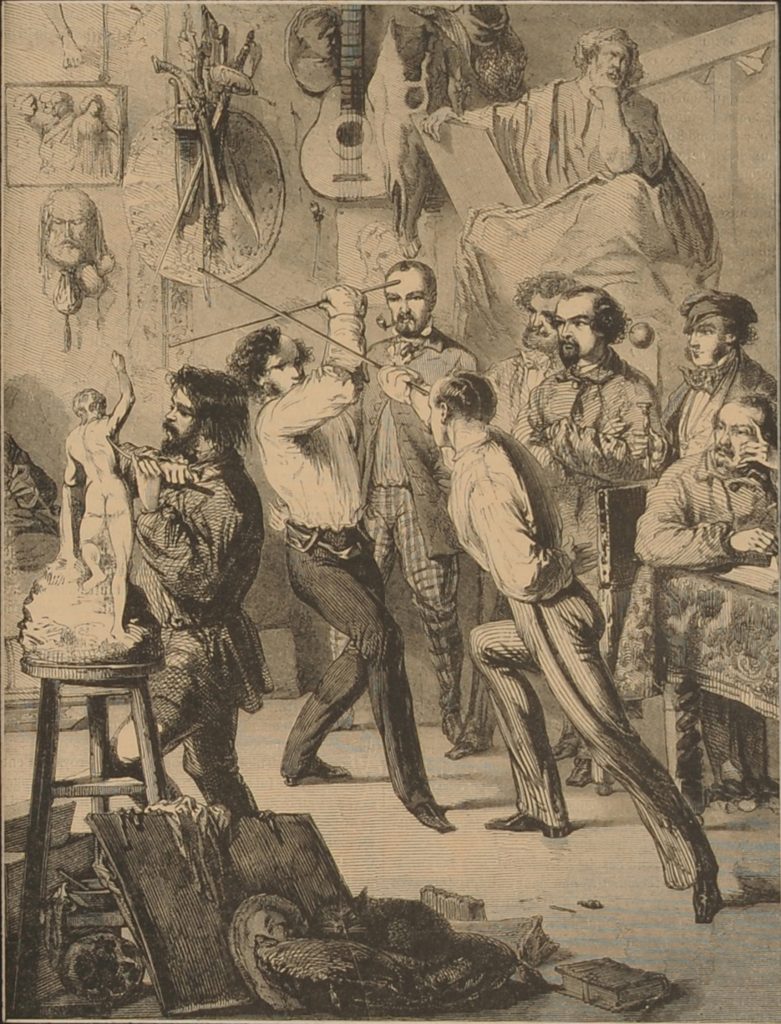
The presence of all these artists in Clésinger’s studio is quite likely, even if we can think that Valentin made a choice above to symbolize the most emblematic figures of the art world of his time. We can consider this painting as an allegory, especially because it is indeed unlikely a painter and a sculptor would have shared the same studio, as the marble dust could have settled on the fresh paint. However, these three works testify to the friendly and bohemian atmosphere that reigned in the studios during the years 1820-1880 and show the privileged relationship that existed between painters, sculptors and writers. This explains why many writers were also art critics during the nineteenth century – a habit largely lost today.
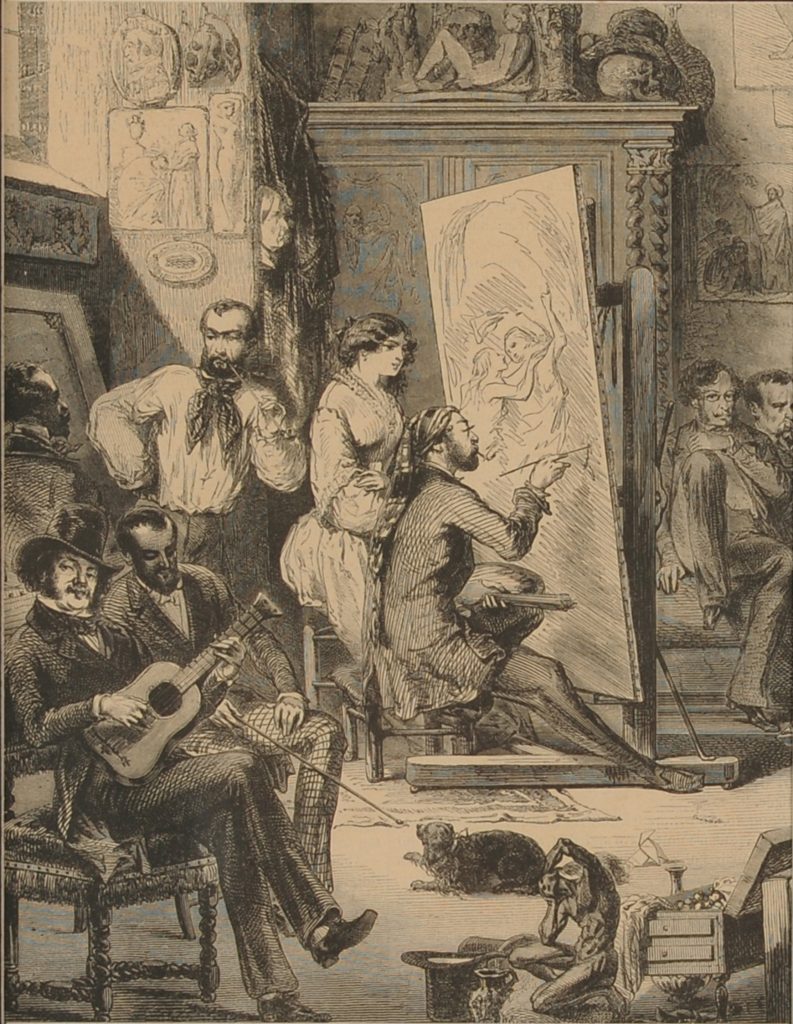
Nevertheless, these works are of greater interest for the history of art: since the research carried out by Hélène Toussaint, curator of the great Parisian exhibition “Gustave Courbet” in 1977, we know that Valentin’s engraving (or even the canvas, because the colors are quite the same) most probably served as a major source for Courbet to compose his famous Atelier du peintre (“The Painter’s Studio”, Musée d’Orsay) in 1854-1855 – one of his most important paintings, which is a true aesthetic and political manifesto he himself called by the oxymoron “a real allegory”…
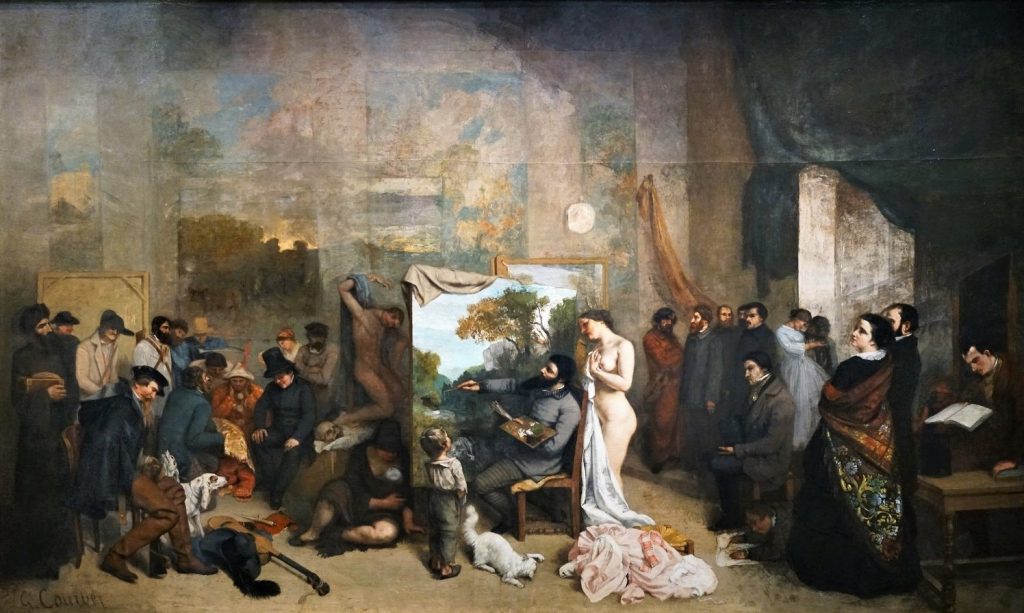
A comparative study of the two paintings recently carried out makes it possible to identify ten points of similarity in the composition: the presence of bladed weapons, a musketeer hat, a human skull, a plaster medallion with a female profile hanging on the wall, a table with turned feet, a cat, a man in front of a mirror, a man reading a book, finally, a woman watching the painter at work. In addition to these similarities, we can distinguish, in the two paintings, the common presence of four persons: Apollonie Sabatier, Alphonse Promayet, Max Buchon and Champfleury, the last three having been close friends of Courbet. Finally, in the foreground of the canvas by Valentin, on the ground, we find a copy of L’Ecorché, a model of a sculpture by Michelangelo that Gustave Courbet kept in his studio, if we believe the painting Les Joueurs de dames (private collection), painted in 1844. All these points in common make it possible to dismiss the hypothesis of a simple coincidence and confirm the theory developed by Hélène Toussaint and today admitted by the main specialists.
Written By Thierry Savatier
